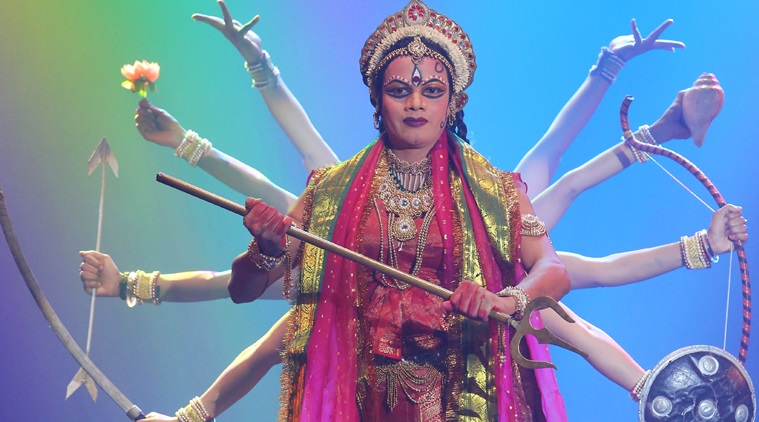📣 For more lifestyle news, click here to join our WhatsApp Channel and also follow us on Instagram
World Dance Day: A dance that goes beyond gender
Traditional Indian dance can safely be termed gender agnostic.
 Shiburam Mohant during a performance.
Shiburam Mohant during a performance.
When Shiburam Mohant becomes Durga for the stage, he is neither man or woman, but pure energy. Says the dancer from Odisha, who will be performing at the annual Shriram Bharatiya Kala Kendra Summer Ballet Festival next month, “All I know at that moment is that I am Durga and have to destroy the demon Mahishasura. There are so many atrocities taking place against women. They should take inspiration from Durga and Ma Kali and remember they are not helpless.”
In the dance drama, having conquered Mahishasura, Durga as Kali, the goddess who loves war and challenges, laughs as she faces off Raktabeej, whose drops of blood give birth to multiple demons. She drinks up the blood before even a drop of it can fall to the ground and once the demon is dead, she breaks into an ecstatic dance of victory.
ALSO READ: World Dance Day: How dance rejuvenates your body and mind
Shiburam, who performs the Mayurbhanj Chau style, has taken on women’s roles several times since he started dancing at the age of six years. His family has been keeping alive the dance form for generations, including his aunt Sulochana Mohant, who died during a performance. Many women, inspired by her, took to the stage, but according to Shiburam, the high levels of energy required for the dance, propel men to take on the feminine roles. With a caveat, of course, “You have to have the looks for it.”
Shobha Deepak Singh, director, Shriram Bharatiya Kala Kendra and festival director, tells us that traditionally too, women’s roles have always been performed by men, such as Pt Birju Maharaj enacting Radha and the gopis. She maintains that men are always keen and ready to take on this challenge as classical and folk dance forms have never made any distinction based on gender. However, she is not sure if the reverse also happens. She says, “Kelucharan Mahapatra executed beautifully the various moods of Radha—her meetings with Lord Krishna, their romance, her anger and disappointment, etc.”
Traditional Indian dance, in fact, can safely be termed gender agnostic. Remarks Singh, “In fact, when male dancers undertake women’s roles, they are usually better than the women dancers themselves. Also I believe in our ancient traditional wisdom that there is a female in every man and a man in every woman; that is expressed eloquently through the concept of Ardhnarishwar. Hence the lines have always been blurred and will continue to remain so.”
Most Kathakali dancers, she adds, portray male and female roles equally well. But she has been most moved by Late Vempati Chinna Satyam’s rendition “Bhama Kalapam” in Kuchipudi, “where he played female characters in an exemplary way”.
As these men take to the stage and dance like nobody’s watching, it’s up to the audience to shed notions of gender and the roles that come with it. These gender bending performances go beyond notions of sexuality and remind us that dance goes beyond physicality and is more about the energy within, transcending the world outside. On International Dance Day, that’s just what we should be doing, honouring dance that makes our spirit come alive.
(The writer is an editorial consultant and co-founder of The Goodwill Project. She tweets @anuvee). Views expressed are personal.
📣 For more lifestyle news, click here to join our WhatsApp Channel and also follow us on Instagram





- 01
- 02
- 03
- 04
- 05






















